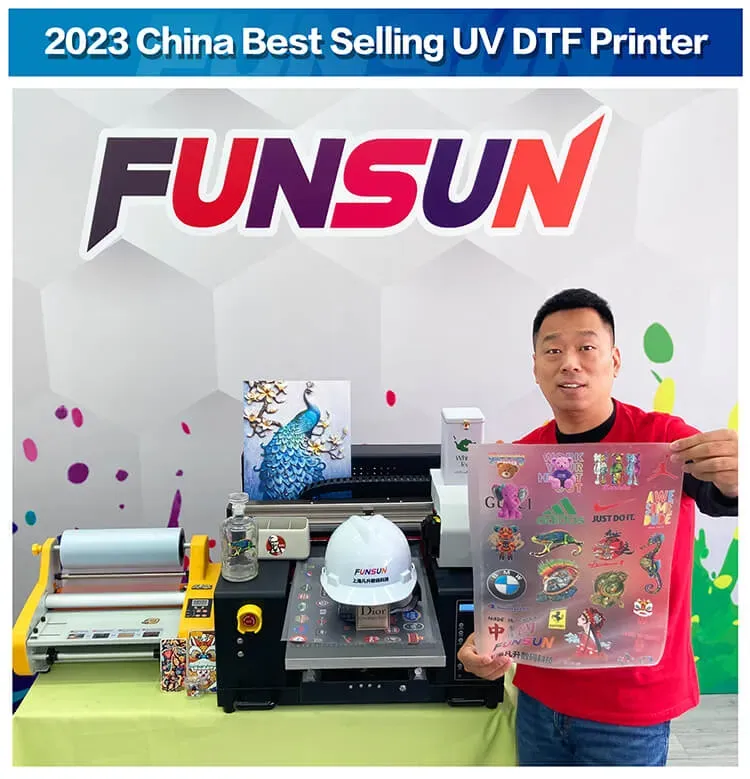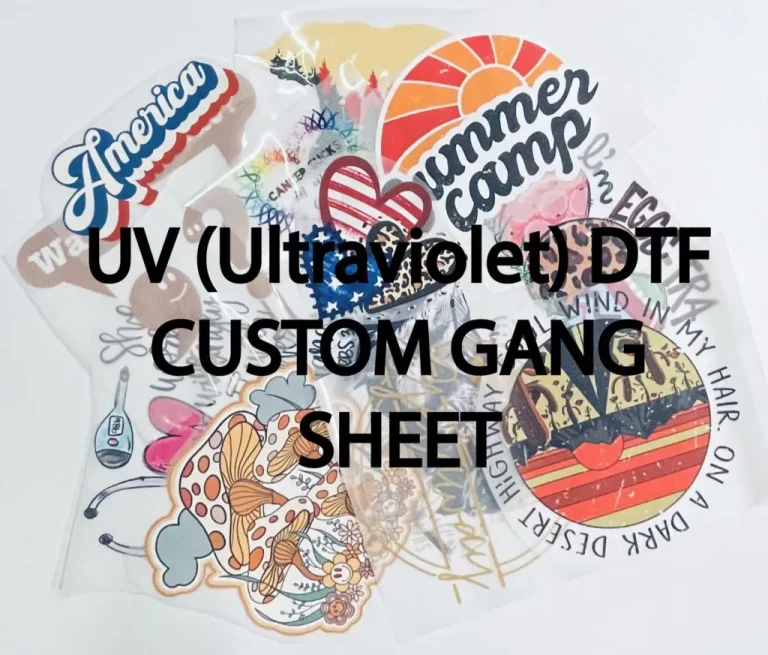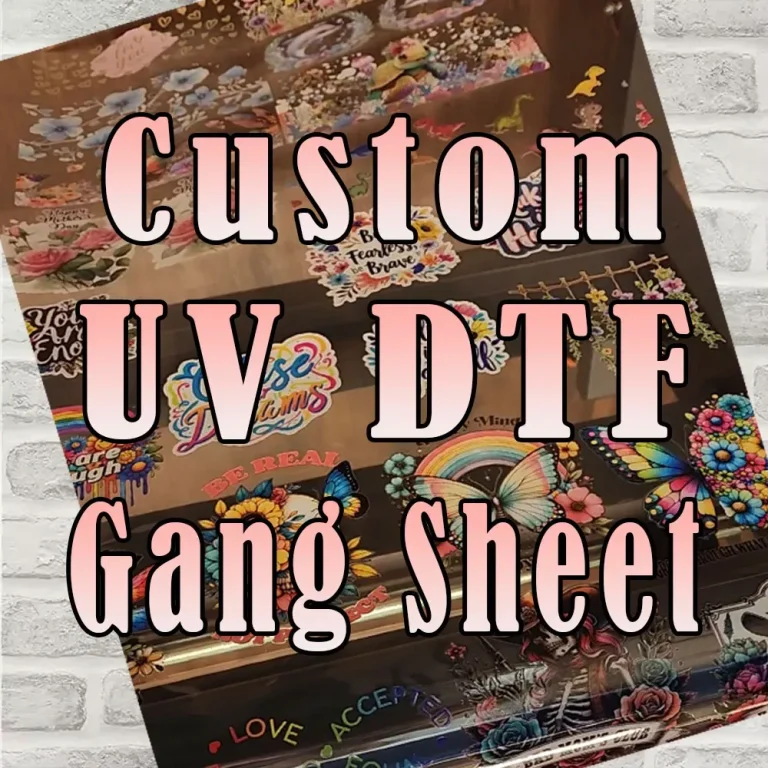UV DTF Printing: From Concept to Creation Explained
UV DTF printing has emerged as a revolutionary technology in the realm of custom printing, utilizing ultraviolet light to create vibrant, high-quality prints directly onto film. This innovative technique allows for exceptional versatility, making it possible to print on a diverse array of surfaces, including textiles, plastics, and wood. As businesses and creatives alike seek to capitalize on the benefits of UV printing technology, the demand for advanced systems has surged, leading to groundbreaking advancements in equipment such as the Mimaki UV printers. Moreover, the launch of user-friendly products like the EufyMake E1 has made direct to film printing more accessible for DIY enthusiasts and small business owners. In this article, we will delve deeper into the world of UV DTF printing, exploring its processes, applications, and the exciting future that lies ahead.
The advent of direct to film printing, specifically UV DTF printing, has transformed the landscape of custom design creation. This process employs ultraviolet light to cure prints on various materials, allowing creators to produce intricate and colorful designs with ease. As this technology evolves, it continues to capture the interest of those in the printing industry, driven by innovations from reputable brands like Mimaki. The integration of multifunction printers such as the EufyMake E1 adds new dimensions to the printing process, enabling users to explore diverse creative avenues. This introduction to the dynamic field of UV DTF printing highlights its growing significance in personalized product solutions and artistic expression.
Understanding UV DTF Printing Technology
UV DTF printing technology utilizes ultraviolet light to cure ink on a special film, making it a revolutionary approach in the printing industry. Unlike traditional printing methods, which involve using heat or air to dry the ink, this technology employs UV light to solidify the print instantaneously. This process enables bold colors, intricate details, and a quick turnaround, catering to the demands of modern creative industries.
As UV DTF printing gains traction, it is becoming a popular choice among businesses looking to create custom printing solutions. The ability to print on various materials such as textiles, wood, plastic, and glass broadens the scope of creativity for designers and businesses. With advancements in UV printing technology, the industry continues to evolve, offering users the flexibility to explore new dimensions in their projects.
The Advantages of UV DTF Printing for Creatives
One of the primary advantages of UV DTF printing is its versatility. This technology allows for printing on an extensive range of substrates, making it ideal for artists, small businesses, and manufacturers alike. The ability to create customized prints that maintain their vibrancy and quality over time is crucial for artists looking to expand their portfolios with durable products.
Moreover, UV DTF printing is known for its eco-friendliness compared to other printing technologies. The inks used are often free from harmful solvents, which means that the production process tends to have a lower environmental impact. This aligns well with the growing consumer preference for sustainable products, encouraging creatives to align their practices with eco-conscious consumers.
How UV DTF Printing Works: A Step-by-Step Guide
The UV DTF printing process begins with design creation, where artists utilize graphic design software like Adobe Illustrator to bring their creative visions to life. Following design approval, the artwork is printed onto a specialized film using a UV DTF printer. This is a critical phase as it determines the quality of the artwork that will be transferred to the final product.
After the film is printed, it undergoes an essential curing process where ultraviolet light solidifies the ink, locking in color and detail. This curing ensures that the print remains scratch-resistant and vibrant even after prolonged use. Once cured, the film can be applied to various surfaces—ranging from t-shirts to promotional items—making it an exceptionally adaptable choice for both commercial and artistic endeavors.
Innovative Products Shaping the Future of UV DTF Printing
Innovations in UV DTF printing technology are paving the way for products like the EufyMake E1, which combines 3D texturing with traditional flatbed printing capabilities. This breakthrough device is designed to meet the needs of small businesses and DIY creators by maximizing productivity in a compact footprint. The EufyMake E1 represents a significant leap in the personal and small-scale printing market.
Furthermore, companies like Mimaki are enhancing the capabilities of UV DTF printers, introducing devices that produce high-quality outputs tailored for both creative and industrial applications. The advances in these technologies allow businesses to explore new avenues for branding and product personalization, bridging the gap between artistic expression and industrial efficiency.
Market Trends Impacting UV DTF Printing Adoption
The market for UV DTF printing technology is experiencing rapid growth, largely driven by consumer demand for personalization and customization. As businesses shift towards more compact and multifunctional devices, the need for innovative printing solutions that cater to these trends is accelerating. Companies are increasingly investing in UV DTF technology to meet consumer preferences for unique, personalized products.
Additionally, the continuous improvement of ink formulations and drying technologies is making UV DTF printing more attractive to businesses across diverse sectors. This trend not only boosts productivity but also enhances the final product’s durability and overall quality, pushing UV DTF printing to the forefront of the custom printing landscape.
Creative Applications of UV DTF Printing in Modern Design
UV DTF printing has revolutionized the realm of custom apparel, allowing for complex designs that remain intact even after multiple washes. Fashion designers now rely on this technology to create unique and personalized clothing pieces that cater to their clients’ specific tastes. The fidelity and clarity of UV prints ensure that each item produced can tell a distinct story through its design.
In addition to apparel, UV DTF printing is rapidly finding application in various promotional products—from branded merchandise to bespoke gifts. Businesses are leveraging this technology to produce eye-catching, high-quality products that stand out in a crowded market. This capability enables brands to create memorable interactions with customers and reinforces the power of custom branding.
Frequently Asked Questions
What is the difference between UV printing technology and UV DTF printing?
UV printing technology generally refers to a printing method that utilizes ultraviolet light to cure inks on various surfaces. UV DTF printing, or Direct to Film printing, specifically involves printing designs onto films using UV inks, which are then transferred onto other surfaces. This technique allows for greater versatility and detailed prints on materials like fabrics, wood, and plastics.
How does the EufyMake E1 enhance the capabilities of UV DTF printing?
The EufyMake E1 is the world’s first personal 3D-texture UV printer designed for UV DTF printing. This innovative device combines the functionalities of a UV DTF laminator and a flatbed printer, enabling users to create intricate 3D designs. It’s particularly useful for small businesses and DIY enthusiasts, as it requires significantly less space compared to traditional printing setups.
What types of surfaces can UV DTF printing be applied to?
UV DTF printing is highly versatile and can be applied to a wide range of surfaces including fabrics, wood, plastics, metal, and glass. This adaptability makes it suitable for various applications such as custom apparel, promotional products, and unique home decor items.
What are Mimaki’s contributions to the UV DTF printing market?
Mimaki has introduced several innovative UV DTF printers that focus on producing high-quality outputs suitable for both industrial and creative markets. Their latest devices, showcased at events like the Fespa Global Print Expo, highlight the advancements in UV DTF printing technology, making it more efficient and accessible for a broad range of users.
How does the curing process in UV DTF printing work?
In UV DTF printing, the curing process involves using ultraviolet light to solidify the ink as it is printed on the film. This immediate curing ensures that the prints maintain their vibrancy and durability, making them resistant to scratches and other forms of damage after they are transferred onto final surfaces.
What future trends can we expect in UV DTF printing technology?
The future of UV DTF printing technology appears promising, with increased focus on compact, multifunction devices that enhance productivity without sacrificing quality. Innovations like the EufyMake E1 are expected to inspire new creative applications in custom home decor, apparel, and promotional items, meeting the growing consumer demand for personalized products.
| Key Aspects of UV DTF Printing | Details | |
|---|---|---|
| What is UV DTF Printing? | A direct printing method using UV light to cure ink on film, versatile for various surfaces. | |
| Process Steps | 1. Design Creation, 2. Film Preparation, 3. Curing Process, 4. Transfer Application, 5. Finishing Touches | |
| Recent Innovations | EufyMake E1 and new devices from Mimaki enhancing compactness and efficiency. | |
| Market Trends | Growing consumer demand for personalized products and investments in UV DTF solutions. | |
| Creative Applications | Custom apparel, promotional products, home decor, gifts, and souvenirs. | |
Summary
UV DTF printing represents a groundbreaking advancement in the printing industry, merging creativity with modern technology. This method uses ultraviolet light to directly cure ink on film, enabling businesses and artists alike to produce stunning and durable prints on a variety of surfaces, from fabrics to wood. With recent innovations such as the EufyMake E1 and advanced devices from Mimaki, UV DTF printing is becoming more accessible and versatile, opening new avenues for personalized products in the market. As the demand for unique and customized items continues to surge, embracing UV DTF printing will allow creators to enhance their offerings and meet consumer expectations.





